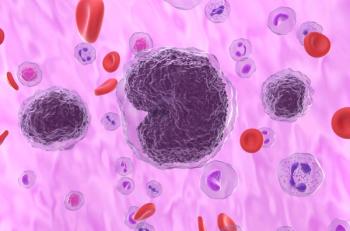
Determining the Risk of Chemotherapy-Induced Neutropenia to Guide Use of Colony-Stimulating Factors
A recent abstract presented at the American Society of Clinical Oncology (ASCO) annual meeting compared 2 risk models for patients with intermediate chemotherapy-induced neutropenia (CIN) risk and compared them to guidelines from ASCO and the National Comprehensive Cancer Network to determine when colony-stimulating factor should be ideally used to prevent CIN. ​​​​​​
Chemotherapy-induced neutropenia (CIN) and febrile neutropenia carry high mortality rates, but the treatment that can be used to prevent both is expensive, so it needs to be used judiciously.
A
Both guidelines from NCCN and ASCO recommend using colony-stimulating factors (CSF) for patients with lung cancer whose chemotherapy regimen carries greater than a 20% risk of developing febrile neutropenia. But the authors note that “if the regimen is of intermediate CIN risk, the guidelines are less definitive.”
The risk models applied were developed by Hosmer et al and Bozcuk et al, and the authors applied both models to see if they added value to the NCCN and ASCO guidelines to more accurately predict CIN in patients with lung cancer.
The authors analyzed 43 patients with primary lung cancer who received chemotherapy and calculated risk scores based on the Hosmer and Bozcuk risk models along with NCCN and ASCO guidelines. Of the 43 patients, 21 developed CIN, 9 severe CIN, 4 moderate CIN, and 8 mild CIN. Of the patients with severe CIN, 4 of them also developed febrile neutropenia.
The Hosmer model recommended CSF for 26 patients, Bozcuk for 22 patients, the NCCN guidelines for 25 patients, and the ASCO guidelines for 38 patients. Both risk models were acceptable for predicting risk, the authors determined, but while they both assigned high-risk scores to patients who did develop neutropenia, they also assigned high-risk scores to many patients who never developed CIN. However, the Bozcuk calculator was more difficult to use, the authors noted.
“The NCCN guidelines missed more patients with severe CIN while the ASCO guidelines gave CSF to the greatest number of patients,” the authors concluded. “The cost for using CSF would have been highest using the ASCO guidelines. Therefore, we recommend the Hosmer calculator for lung cancer patients receiving intermediate risk CIN chemotherapy as it lends to accurate but judicious use of CSF.”
Newsletter
Stay ahead of policy, cost, and value—subscribe to AJMC for expert insights at the intersection of clinical care and health economics.













































